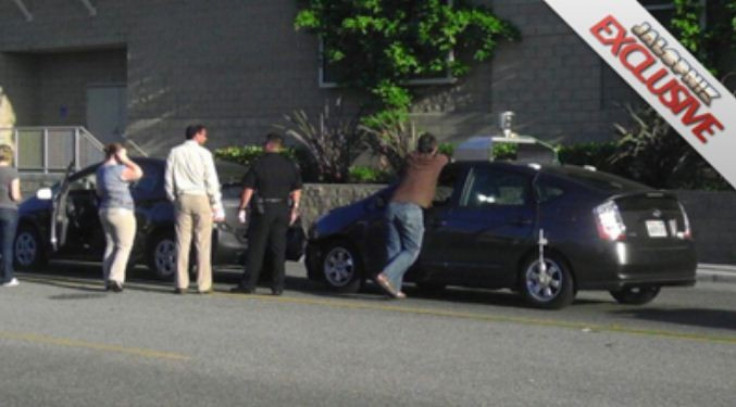Robots Drive Safer Than Humans, Google Keeps Perfect Driving Record

Google has been involved in a car accident with another vehicle while operating its automated robot car. The Google Prius was reported to have rear ended several cars including another Toyota Prius. The tech giant claims that the accident occurred while the car engine was switched to manual mode saying the automated robot was not responsible.
The automated Google cars have been roaming the California streets and freeways for over a year now logging in over 140,000 miles. With those many miles, the search giant claims there has been no speeding tickets issues, no accidents reported, and it was all driven by the automated robot system.
"Safety is our top priority...One of our goals is to prevent fender-benders like this one, which occurred while a person was manually driving the car," said a Google spokesman.
A human driver, holding a perfect driving record, is seated in each automated car just in case the vehicle needs to be controlled. Google stands by its proud record and will try to maintain an untarnished record by clearing up the recent mishap with its human driver.
No accidents and tickets are quite impressive for such a high number of logged miles. The current situation may present a case where Robot drivers could be safer than humans. The Google cars are equipped with some high tech gear including video cameras in order to spot pedestrians.
Another feature is their LIDAR, or light detection and ranging sensor attached to the car's roof. It feeds the car information and creates a 360 degrees three dimensional map of the surrounding environment. Other advantages the robot has over humans are multiple sensors that feed into the computer, giving it full time monitoring in all directions. The sensors are attached to the front and rear of the car for enhanced vision of surrounding cars, objects, and people.
And the final component the robot has advantage over human driver is Google's SLAM, Simultaneous Localization and Mapping, feature that give the car instant directions. The SLAM function also automates the car to simultaneously update Google Maps and record changes as it drives through its environment. The data was previously collected by human drivers then the robots can then make updates on its own as it roams the streets.
The state of California and Nevada has legalized the automated cars after Google confirmed that the robot cars are manned by human drivers at all times during operation. The innovative vehicles are expected by the government to increase state income, reduce traffic, and pioneer the concept of self driving cars in the United States.
In Nevada, the use of Google's robot cars can reduce traffic and lower fatalities related to drunk driving. Humans could be affected by fatigue and substances, but robots remain consistent in performance. Some examples of increased state income for Nevada come in the form of transporting their 37.4 million gamblers from one location to the next in a quick efficient manner. Reduced accidents means less time spent in traffic and more time at the slot machines.
© Copyright IBTimes 2024. All rights reserved.











